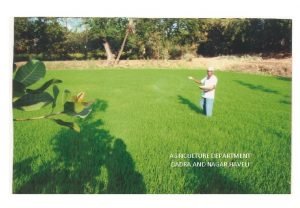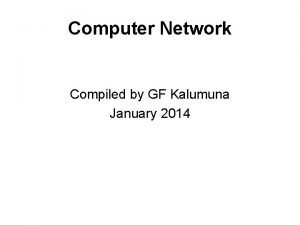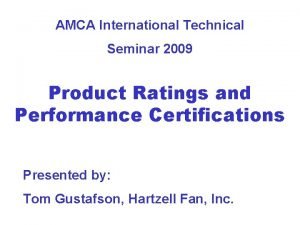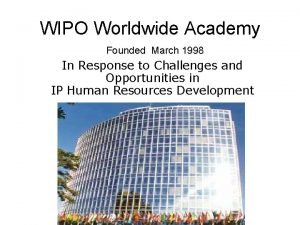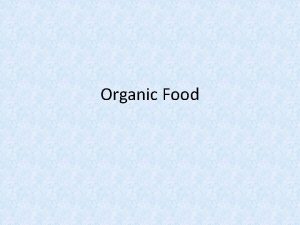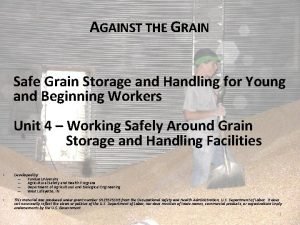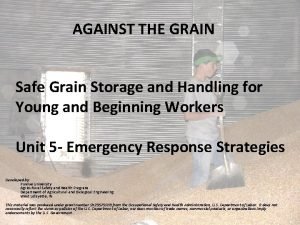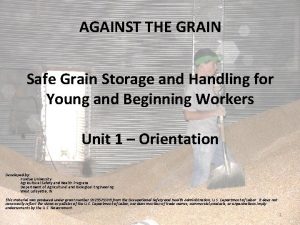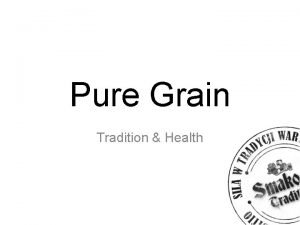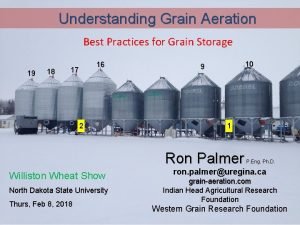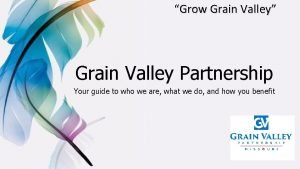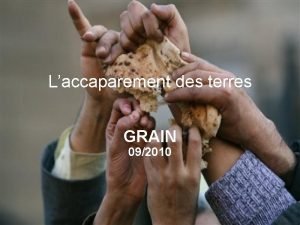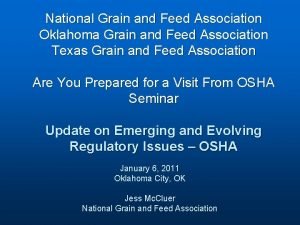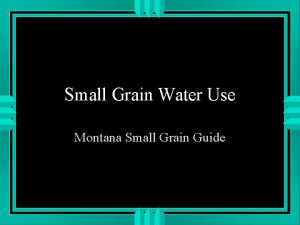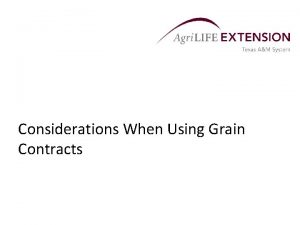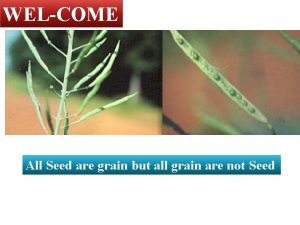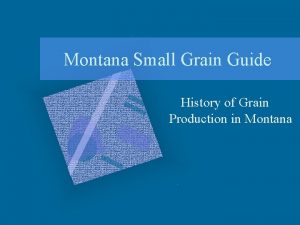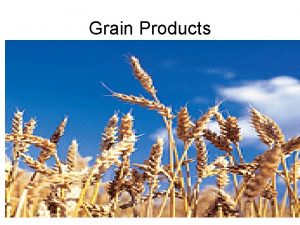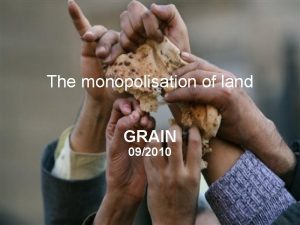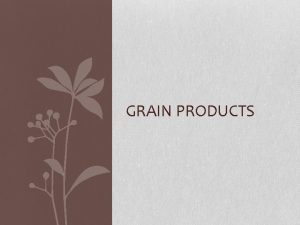Grain is grown worldwide Principal food for humans








































- Slides: 40


Grain is grown worldwide § Principal food for humans § Principal food for domesticated animals (cattle, hogs, poultry) § 7 Million modern grain farmers worldwide

Cereal Crops § § § § Wheat Oats Barley Rye Corn Rice Many others Oil Seed Crops § Canola § Soybeans § Flax § Many others

World Harvesting Methods WHOLE CROP HARVESTING § Removes grain, chaff and stalk from field § Requires less herbicides § Biomass used for feed animal bedding § Huge volume of material removed creates material handling problems

World Harvesting Methods COMBINE § Replaced whole crop harvesting - less labour § Removes only the grain kernel from field § Spreads weeds increased herbicide use § Wasteful - valuable biomass left in field

The Mc. Leod Harvest System § Removes grain kernel and chaff from the field § Leaves straw in field § Grain kernels and chaff separated by a mill

The Mc. Leod Harvest System § Produces two products: (1) Grain (2) Valuable animal feed § Removes weed seeds from the field

The Mc. Leod Harvest System NO MORE LABOUR NO MORE TIME NO MORE RISK THAN COMBINING GREATER FIELD VALUE INCREASED EQUIPMENT EFFICIENCY

Mc. Leod Harvest System

Farm Economics § Millings can be used by farmer or sold – significant revenue increase § Reduces input costs – herbicides § Reduces labour – saves baling and bale handling

Research § 10 years – $12 million invested § Engineering involved: hydraulics, pneumatics, mechanical, electronics § Science: weed science, feed science, crop science

The World’s Premier Harvesting System è More equipment value è More economics è Greater efficiencies

Potential North America § 8, 000 combines sold per year § 1 million farmers harvest grain World § 70% of the world’s grain supply is harvested outside North America

The Mc. Leod Harvest System • • • A revolutionary harvest system with world implications The system works The system is efficient Economics are superior to the combine The system’s integrity is established The system is on the market Margins are obtainable A viable business is readily foreseeable Experienced, committed management and staff
















Don and Ken Armitage farm 1200 acres and have 130 beef cows in Miniota, Manitoba. The millings from the harvested crop is equivalent to about 700 round bales of hay. They no longer bale hay for winter rations.










Hacault Family, Bruxelles, Manitoba Murray Mulllin, Cartwright, Manitoba Alex Bickley, Sylvan Lake, Alberta Clay Cory (bottom rt. ), Wawanesa, Manitoba Lorne and Linda Hayward, Virden, Manitoba Lynn and Dean Grant, Val Marie, Saskatchewan Richard Seatter, Dapp, Alberta Rod and Graham Pusch Windthorst, Saskatchewan Randy Radau, Bowden, Alberta Cy and Patrick Skinner, Provost, Alberta Harold Solick, Lacombe, Alberta Alan Whitrow Yellow Grass, Saskatchewan
 Shade grown coffee vs sun grown
Shade grown coffee vs sun grown Refined grain bread
Refined grain bread My grown up christmas list link
My grown up christmas list link Maui grown coffee
Maui grown coffee All grown up and no place to go
All grown up and no place to go Agriculture projects in dadra & nagar haveli
Agriculture projects in dadra & nagar haveli Map of north central plains
Map of north central plains Who is father of english drama
Who is father of english drama Wild swans at coole techniques
Wild swans at coole techniques Fennec fox fully grown
Fennec fox fully grown Emperor tiberius grown
Emperor tiberius grown Unit 2 food food food
Unit 2 food food food Food chain sequence
Food chain sequence Exchangewise
Exchangewise Worldwide telescope online
Worldwide telescope online Bp 401
Bp 401 Fsi worldwide
Fsi worldwide Are countrywide and worldwide networks
Are countrywide and worldwide networks Cogwa fundamental beliefs
Cogwa fundamental beliefs Amca worldwide certified ratings
Amca worldwide certified ratings Four strategic choices for mnes
Four strategic choices for mnes Worldwide lhc computing grid
Worldwide lhc computing grid Wipo dl 101
Wipo dl 101 Caterpillar dealers worldwide
Caterpillar dealers worldwide The swift society
The swift society What causes wind to blow brainpop
What causes wind to blow brainpop Church of god worldwide association
Church of god worldwide association Reasons for accounting diversity
Reasons for accounting diversity Worldwide
Worldwide Leveraging subsidiary skills
Leveraging subsidiary skills Biz worldwide (pvt) ltd
Biz worldwide (pvt) ltd Worldwide product structure
Worldwide product structure 5 voices myers-briggs
5 voices myers-briggs Worldwide applications
Worldwide applications Confidential logistics company
Confidential logistics company Worldwide reach human touch
Worldwide reach human touch Eagle worldwide ministries
Eagle worldwide ministries Worldwide interoperability for microwave access
Worldwide interoperability for microwave access Worldwide interoperability for microwave access (wimax)
Worldwide interoperability for microwave access (wimax) Worldwide espacenet
Worldwide espacenet In worldwide
In worldwide





